Ecology # 4 [the population against the environment
Ecology is a branch of science that studies the relationships of living beings and their environment. The Earth has many species of living things, ranging from very complex plants and animals to simple organisms such as fungi, amoeba and bacteria. Yet all beings live without exception, can not live alone. Each depends on other living beings or inanimate objects around them. For example, a deer needs certain herbs for food, if the plants in the surrounding environment are destroyed then the deer must move or die of hunger. Instead plants to live also depend on animals to meet their nutritional needs. Animal waste, carcasses of animals and plants, provides a variety of nutrients that are beneficial to plants.
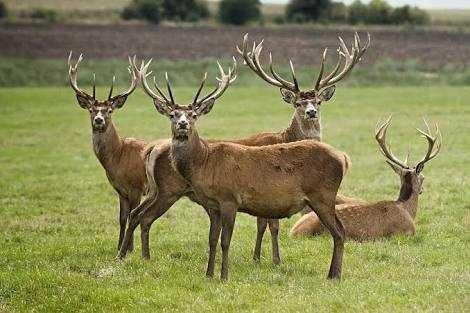
Although the changes take place elsewhere on earth, the consequences will be felt in the environment around us. Although ecology is a branch of biology, an ecologist must master other sciences such as chemistry, physics, and computer science. Ecology also deals with certain fields of sciences such as geology, meteorology, and oceanography, to study the environment and its relationship between land, water, and air. Approaches from various sciences help ecologists to understand how non-living environments affect living beings. It can also help to estimate or foresee the impact of environmental problems such as acid rain or greenhouse effects.
Ecologists study the organization of nature in three levels:
- Population,
- Community,
- Ecosystems

They analyze the structures, activities and changes that occur within and between these levels. Ecologists usually work in the field, learning how nature works. They often reside in isolated areas such as in an archipelago where the relationship between plants and animals may be simpler and easier to understand. For example the ecology of Isle Royale an island in Lake Superior has been studied extensively. Many scientists are focusing on how to solve a problem, such as how to control the effects of air and water pollution damage that affect the living creatures.

The population is a group of living organisms of the same species, living in the same region within the same period. For example all deer in the Isle Royale form a population, as well as cypress trees. Ecologists ensure and analyze the number and growth of the population and the relationships between species and environmental conditions
The sum of a population depends on the influence of the two basic forces. First is the amount appropriate for the population to live with ideal conditions. The second is a combination of effects of less favorable environmental factor conditions that limit growth. Restricting factors include the availability of low food quantities, predators, competition with living species or other species, climate and disease.
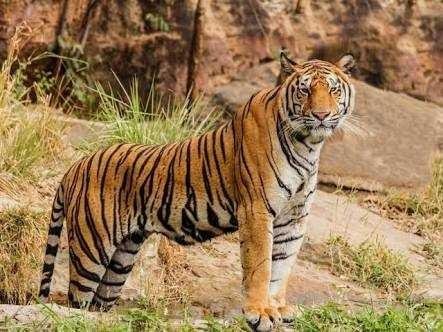
The largest number of specific populations that a particular environment can support is called the environmental load capacity for the species. Normal populations are usually smaller than their environmental load capacity due to adverse weather effects, poor babysitting season, hunting by predators, and other factors.
The population level of the species may change over time. Sometimes these changes are caused by natural events. For example, changes in rainfall may cause some populations to increase while other populations decrease. Or the emergence of new diseases can sharply decrease the population of a plant or animal species. For example heavy equipment and cars produce acid gas released into the atmosphere, which mixes with clouds And descends to the earth as acid rain. In some areas that receive acid rain in large numbers of fish populations decline sharply.
A community is a collection of plant and plant populations that live together in an environment. Wolves, deer, beavers, cypresses and birch trees are some of the populations that make up the forest community on Isle Royale. Ecologists study the role of each of the different species within their community. They also study other types of communities and how they change. Some communities such as isolated forests or pastures can be easily identified, while others are very difficult to ascertain.

A community of plants and animals covering a very large area is called a biome. Different biome boundaries are generally determined by climate. The main biome includes deserts, forests, tundra, and several types of water biomes.
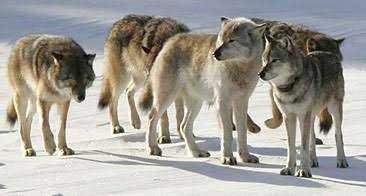
The role of a species within its community is called the role of ecology (niche). An ecological role consists of the ways in which a species interacts within its environment, including certain factors such as what is eaten or what is used for energy, predators that prey, the amount of heat, light or moisture required, and conditions that can reproduced
The changing community is called ecological succession. Processes that occur in the form of slow sequences, in general the changes can be predicted in terms of the number and type of organisms that exist in a place. Differences in sunlight intensity, protection from wind, and soil changes can alter the types of organisms that live in a region. These changes can also change the population that makes up the community. Furthermore, as species and species change, the physical and chemical characteristics of the region undergo further changes. The region can reach a relatively stable condition or called a climax community, which can last for hundreds or even thousands of years.
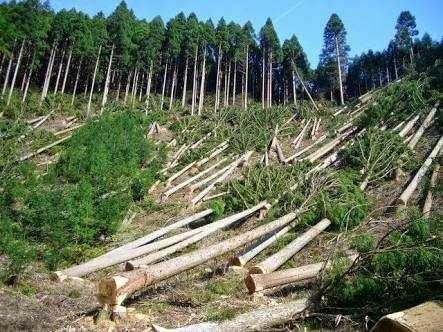
Ecologists distinguish two types of succession: primary and secondary. In a primary succession the organism begins to occupy a new, non-existent region of life like a new island formed by volcanic eruptions. For example, the krakatau that was formed since 1928 from sterile conditions, is now inhabited by dozens of species.

Secondary succession occurs after the existing community suffers from great disturbance as an example of a climactic (stable) community destroyed by the occurrence of forest fires. The community of meadows and wildflowers will grow first. Followed by bushes. Finally the new trees reappear and the area will return to the forest until the disturbance reappears. Thus the last forces of nature lead to a climactic (stable) community. In addition, ecologists view fires and other major natural disturbances as acceptable and expected.
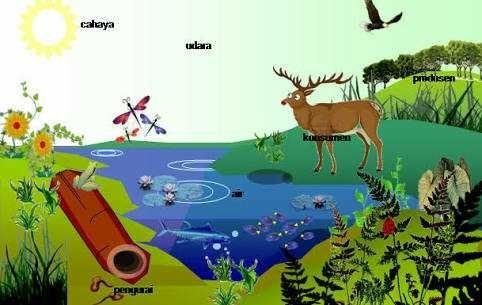
An ecosystem is the most complex level of a natural organization. Ecosystems are formed from an abiotic community and environment such as climate, soil, water, air, nutrients and energy. Systems ecologists are those who try to link together some of the different physical and biological activities within an environment. Their research is often focused on the flow of energy and the cycles of materials present in an ecosystem. They typically use sophisticated computers to help understand the data collected from field research and to predict future developments.

Ecologists categorize the elements that make or that effect an ecosystem into 6 main parts based on the flow of energy and nutrients flowing into the system:
- Sun.
- Inorganic materials
- Manufacturers
- First Consumer
- Second Consumer
- Parser
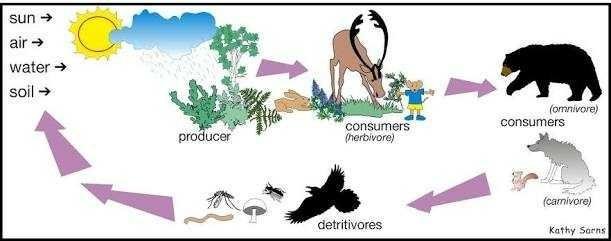
These sustainable levels of energy that take place in the form of food are called food chains. In a simple food chain the grass is a producer, the first consumer like a rabbit to eat grass. The rabbit is then eaten by a second consumer such as a snake or a tiger. The decomposing bacteria destroy the dead remains of dead grass, rabbits, snakes, and tigers, just as destroying animal waste.

Most ecosystems have a variety of producers, consumers and decomposers forming an overlapping food chain called the food network. Food networks are particularly present in tropical ecosystems and marine ecosystems.

Some species eat many types of food but others also need special foods. The first consumers like koalas and pandas mainly eat one type of plant. Koala main food is eucalyptus and panda main food is bamboo. If these plants die then both animals also die.
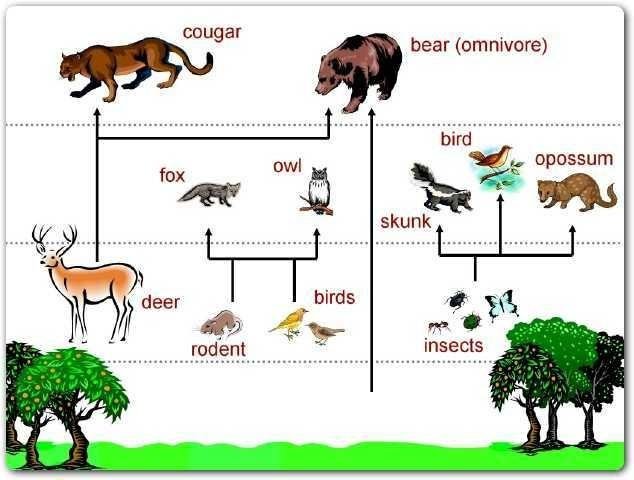
The energy that moves through an ecosystem is in a sequence of transformations. The first producer turns sunlight into chemical energy stored in protoplasm (plant cells) inside the plant. Furthermore, the first consumer to eat plants, converting energy into different forms of chemical energy stored in the body's cells. This energy changes back when the second consumer eats the first consumer.

Most organisms have low ecological efficiency. This means they can only change a small portion of the energy available to them to be stored into chemical energy. For example, green plants can only change about 0.1 to 1% of solar energy that reaches it in protoplasm. Much of the energy caught is burned for plant growth and releases into the environment as heat. Similarly herbivores or carnivorous animals and carnivorous meat-eating animals convert energy into body cells in only about 10 to 20% of the energy produced by the food they eat.
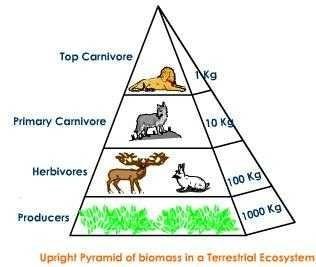
Because so much energy escapes as heat at every step of the food chain, all ecosystems develop an energy pyramid. Plants as producers occupy the bottom of the pyramid, herbivores (first consumer) form the next part, and carnivores (second consumer) form the top of the pyramid. The pyramid reflects the fact that much of the energy passes through plants compared to herbivores, and more through herbivores than with carnivores.

In the terrestrial ecosystems the energy pyramid produces a biomass (heavy) pyramid. This means that the total weight of the plants is greater than the total weight of the herbivore that goes beyond the total weight of the carnivore. But in a sea of biomass (weight) the plants and animals are the same.

Ecologists gather information on a biomass pyramid on the Isle Royale. They examined the relationship of pyramids among plants, deer and wolves. In one study they found that 346 kg of weighing plants needed for a 27-kg deer meal were needed. This weigh deer is what is needed for a 0.45 kg wolf food.
All living things are made up of certain chemical elements and chemical compounds. Among them are water, carbon, hydrogen, nitrogen, oxygen, phosphorus and sulfur. All of these materials rotate through the ecosystem continuously. Phosphorus rotation for example, all organisms require phosphorus. The plants take the phosphorus compounds from the soil and the animals get the phosphorus from the plants and other animals that are eaten. The decomposers return the phosphorus into the soil after the plants and animals die.
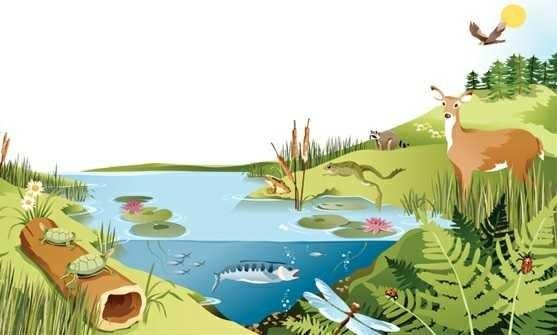
In the natural ecosystems undisturbed the amount of phosphorus is fixed, but when an ecosystem is disturbed primarily by human activity, phosphorus is often leaked out. This will reduce the ability of ecosystems to support plant life. One example is when humans turn forest into agricultural land. In the absence of protective forests the phosphorus drifts along with the soil and is swept into rivers or lakes. This greatly disturbs the growth of algae. In the end the phosphor is trapped in a mud deposit at the bottom of a lake or ocean. Due to the loss of phosphorus farmers have to buy expensive fertilizer to restore the phosphorous substance into the soil
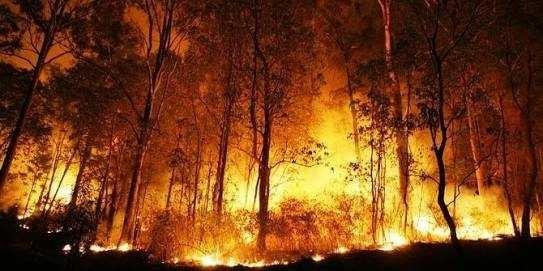
Ecosystem changes occur daily, seasonally and when ecological succession takes place over time. Sometimes change happens repeatedly and suddenly, like when a forest fire or a tsunami waves sweeps the shore. The most frequent changes from day to day, especially to nutrient circles, which are not visible, ecosystems tend to be stable. The real stability between plants and animals and the environment is called the balance of nature.

Studying ecology is very important, because our future is highly dependent on ecological relationships around the world. Although the changes take place elsewhere on earth, the consequences will be felt in the environment around us.

The application of ecology is the use of ecological research to achieve practical goals. This research helps us to maintain and manage natural resources and protect the environment. Applied ecologists work with scientists from various fields to try to solve problems concerning the health and well-being of humans, plants and animals.

Ecologists are concerned about the amounts people spend on non-renewable sources such as coal, gas, and oil, as well as the pollution it causes because of continuous usage. If the population continues to grow then the problems of oil shortage, pollution, forest clearing, congestion, poverty and weather disturbances will also worsen.
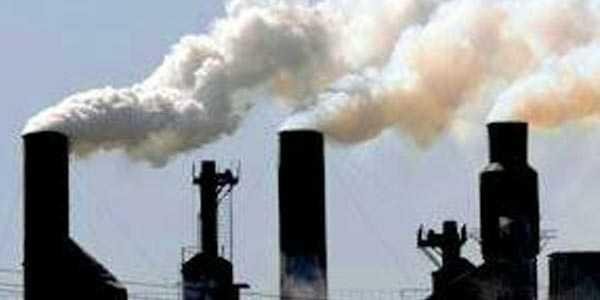
Concerns are increasing with the loss of natural ecosystems and many species lost by changing forests and grasslands into agricultural land, settlements, and vacant land. Many people assume that the research and activities of ecologists contradict economic practitioners.
https://id.m.wikipedia.org/wiki/Ekologi_populasi
http://oryza-sativa135rsh.blogspot.co.id/2010/01/ekologi-populasi.html?m=1
If you are Enjoyed this article feel free to check out some of my previous editions of Ecology
,,,,, @sahlan89
You received a 10.0% upvote since you are not yet a member of geopolis and wrote in the category of "geopolis".
To read more about us and what we do, click here.
https://steemit.com/geopolis/@geopolis/geopolis-the-community-for-global-sciences-update-4
If you do not want us to upvote and comment on your posts concerning earth and earth sciences, please reply stop to this comment and we will no longer bother you with our love ❤️